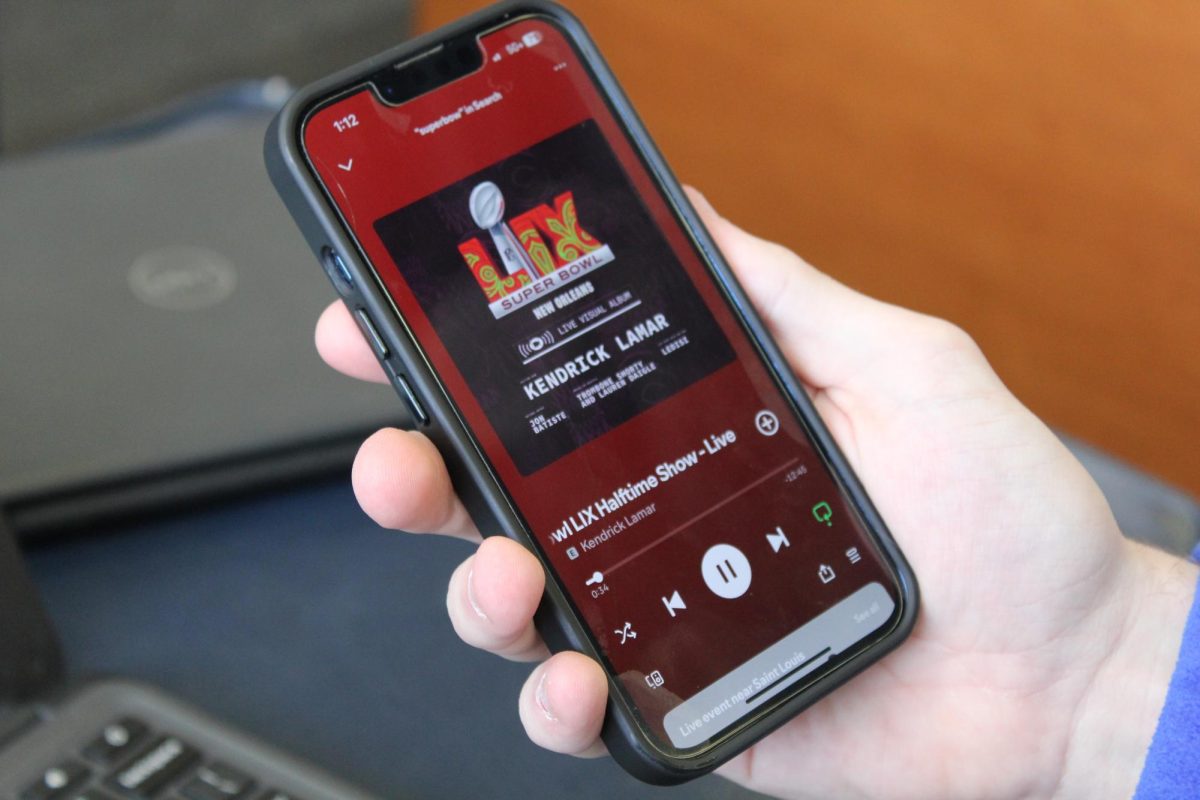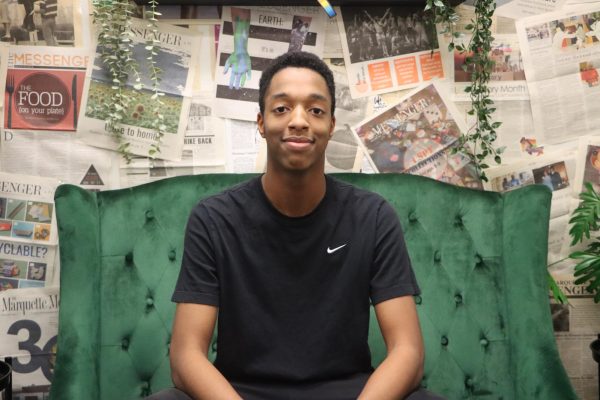A long-time fan of Kendrick Lamar, Micah Rodgers, junior, was eager as he watched the Grammy-award winning hip hop artist headline the Super Bowl LIX Half Time Show.
“He’s definitely my favorite rapper,” Rodgers said. “I was excited to see him perform.”
While watching his performance on Sunday, Feb. 9, Rodgers’ expectations were met.
“The first thing I noticed was the cinematography,” Rodgers said. “For a live footage event, it was very well shot.”
Rodgers said he later found himself rewatching the performance on the Internet, where he started to pick up on a larger detail that made it stand out from previous half-time shows: the symbolism and storytelling.
Lamar’s Super Bowl performance, which featured songs from his recent album “GNX” such as “Squabble Up,” “Luther,” “Man at the Garden,” “Peekaboo” and “TV Off,” as well as his diss track “Not Like Us,” and guest appearances from singer SZA and actor Samuel L. Jackson was heavy in symbolic visuals, double entendres and subtle commentary.
This is not the first time Lamar’s work has included deep and complex themes. As a conscious hip-hop artist, many of his songs and albums tend to cover a variety of cultural and political topics such as race relations, the struggles faced by African Americans, gang violence and generational trauma.
Rodgers said he noticed particular details such as the red, white and blue colors of the dancers’ clothing and the inclusion of Jackson as Uncle Sam, who acted as an announcer and routinely interjected the performance to either critique or praise Lamar for his song choices.
“The storytelling was amazing,” Rodgers said. “The use of Uncle Sam was to portray what the casual user or viewer of the event would see. The red, white and blue could represent gang affiliation.”
Among these details, Lamar’s performance also included references to “40 acres and a mule” – a term referring to the promise to provide reparations to African-Americans for slavery that was overturned by Andrew Johnson – and the “great American game.”
Kaylee Horn, senior, has been a fan of Lamar since he released his song “HUMBLE” in 2017. She said she was very quick to pick up on the symbolism and commentary.
“I remember watching it and just being like, ‘wow,’ and mentally writing stuff down,” Horn said. “I knew I wanted to talk about it with people.”
Horn said many people misinterpreted Lamar’s message and were disappointed due to focusing more on what they saw as an underwhelming performance rather than acknowledging his commentary.
“I think a lot of people were just bummed that it wasn’t as much of a performance as they were looking for,” Horn said.
Horn said she does not agree and said it was important that he focused more on political commentary rather than pure entertainment due to the current state of the U.S.
“Rap music is inherently political. There’s nothing you can really ignore about that,” Horn said. “People that try to make rap music and ignore or completely bulldoze through the idea of politics in rap music are completely missing the point.”
Shelly Justin, language arts teacher, said she sees the performance – and rap in general – as a form of poetry.
“It’s the epitome of poetry,” Justin said. “It’s really a reflection of what is happening in the world and in [Black] culture at the moment, and that to me is the most beautiful, expressive part.”
Justin said she was not only enthralled by the lyricism of the artists involved, but the visuals incorporated into the stage during the performance. She said it was akin to a “workable piece of art.”
“Like if you would go to an art museum, and you know how you’ve seen some exhibits where there were moving pieces and parts,” Justin said.
Justin said she felt it was important that Lamar made his performance into a political statement as many groups have felt attacked in the current political climate of America.
“I think the Black culture is really feeling something right now,” Justin said. “[Lamar] is reflecting that.”




